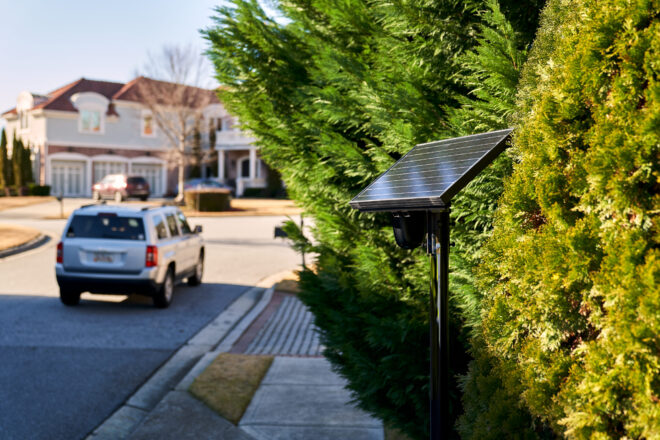Chadbourn Police have a new tool for finding stolen cars and suspect vehicles.
Council approved an $85,600 contract with Flock Safety to install and maintain 12 license plate reader (LPR) cameras in the town. The cameras cost $40,000 per year, plus a $5,600 installation fee.
Interim Chief Ken Elliot explained that the cameras have made a major difference in several area communities. Most recently Flock camera systems helped track down a trio of suspects in Myrtle Beach after they robbed a man at a bus station. Elizabethtown, Horry County, Fairmont and Robeson County all have the systems.
The cameras are not constantly surveilling traffic and citizens, Elliot explained.
“This is not Big Brother,” he said.
The LPR cameras can detect and read license plates at speeds as high as 80 mile per hour, Elliot explained. If a license plate has been entered into the system, the central computer notifies law enforcement within seconds that a suspect vehicle or tag has been spotted, and where the vehicle was last seen.
“With towns working together it will be providing a greater safety net to all citizens, taking crime off the street and raising law enforcement to a new level of safety,” Elliot said.
The Flock network updates multiple times a day, and contains information such as descriptions of stolen or suspect cars, missing or reported stolen license plates, and Silver and Amber alerts.
“In just a few seconds of the LPR taking a picture, it can let us know that there’s a hit on a vehicle,” Elliot said. “It tells us exactly where the vehicle is, the direction of travel, and other information to help us track it down.”
Up to 30 days of records can be searched on the Flock camera system’s cloud drive, Elliot said.
“Let’s say there’s a report of a hit and run involving a black four-door car,” he said. “The officer can log on to the Flock and do a search for black, four-door cars in a certain area during a certain time period.”
The system is triggered by a motion sensor, Elliot said, and is solar powered.
“It can shoot eight to ten pictures a second,” he explained. “That means we can get a full view of the vehicle, and possibly even more information, such as the number of passengers.”
Elliot was quick to point out that the cameras are not “red light” cameras like those facing litigation in some cities.
“These aren’t for writing tickets or traffic citations,” he said. “They’re just for detecting vehicles that have been put into the system for any reason.”







